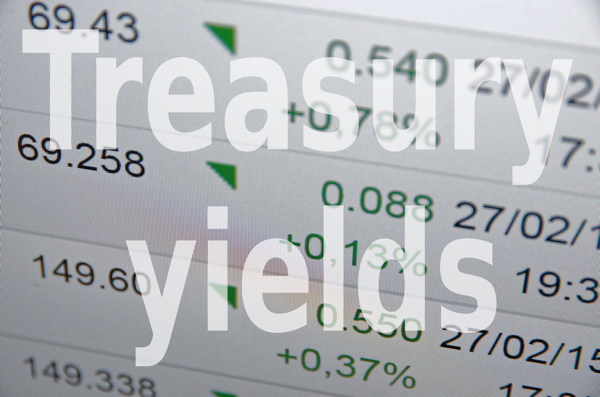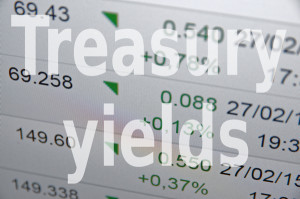
Oil prices and the US Yields to dictate the pace this week
While geopolitical tensions remain bubbling under the surface, rising oil prices and higher US yields suggest investors are likely to deal with increased volatility as a broad range of political, economic and financial events unfolds
US Core PCE, GDP price index, personal consumption data are expected to set the tone this week. Nevertheless, politics will stay on the radar, as we should be in for a plethora of opinions during the build-up to the USA historical meeting with North Korea in May, even more so with North Korea announcing they are suspending missile and nuclear tests.
While everyone will be keying on the PCE, don’t overlook Fridays advance Q1 real GDP report which will cornerstone near-term expectations for growth and could be the most impactful data of the week.
Three central banks: the ECB, the BoJ and the Riksbank take to the stage, but all three are expected to remain on hold. The markets are now of the view global central banks l will kick the policy can further down the road in an attempt to stall for more time to access the global fallout worsening economic data – the press conferences should be reasonably quiet.
The recent downturn in global economic data is suggesting we are moving from a state of global synchronised growth to a synchronised slowdown. Partially explaining why global central bankers are applying a heavy coat of dovish wax to their policy guidance these days.
Oil Markets
Traders will be intently monitoring rumours suggesting an attempted coup was underway in Saudi Arabia. Any hint of a coup will add a considerable element of uncertainty in the region, as the Riyadh is currently dealing with a threat of Yemeni rebels so any indication of destabilisation within the areas top exporter should send risk premiums through the roof and oil prices surging higher.But it appears yesterday Palace rukus was much ado about nothing as it was later confirmed an unauthorised drone was shot down over the Royal Palace in Riyadh. With Yemen tension running high, Saudia Arabia will act vigilantly in these situations as Shiite rebels and their allies in Yemen have been known to use drones against the Saudi -led coalition in the past.
Post Jeddah oil meetings, OPEC and Russia compliance remains high and solidly committed to reigning in oversupply which should continue to support prices. But involuntary supply cut’s and production outages in Venezuela will also continue to support even more so after the falls in US inventories last week. Moreover, all the while Oil Traders are playing the waiting game for probably oil sanctions against Iran, which could push oil prices up as much as $3-7 per barrel. Also, factor in last weeks Saudi jawboning targetting $80 or $ 100 per barrel it suggests prices will remain firm for the foreseeable future and should continue to gravitate higher.
While Oil traders docket is obviously full this week with tangible narratives, but none the less after getting caught off guard after President Trump tweeted that he found OPEC driving up prices artificially was unacceptable they will be keeping a closer eye on the Presidents twitter account. While not clear what type of reprisal the administration could take, it has traders again looking over their shoulder for more Whitehouse bluster.
Oil Prices and Yield Curve
Besides rising oil prices and the inflationary impact on the US yield curve, the Bond market sell-off is as much a factor of supply concerns at this stage, so even with yields moving higher if auction cover ratios remain tepid, it should not be USD supportive. None the less high US yields will have negative implications for on EM currencies especially if the higher US yields continue to provide a fillip to the USD. We could see a break in Oil prices traditional slightly negative correlation with the USD in this environment.
Gold Markets
Rising US Bond Yields and a firming US dollar will present the most obvious risk for Gold this week. With little to no stirring on the geopolitical front and trade tensions abating, Gold may lose its lustre near term, and we could see a further culling of long positions on dwindling appetite, more so if the USD extends last week bullish momentum.
Currency Markets
An unusual amount of USD housekeeping taking place on a very “squeezy” Friday as several supportive dollar themes start to take shape which should influence trading decisions this week. A big selloff in global fixed income has provided the USD with a solid foundation.
Higher US yields have played a role in supporting the USD as surging oil prices make for a compelling inflationary storyline.
With both the BoE and BoC waxing dovish, the markets are betting that ECB will kick the policy can further down the road in an attempt to stall for more time stall for more time – the press conferences should be reasonably quite also.
There has been a reduction in the Trump USD dollar risk premium after Deputy Attorney General Rod Rosenstein told President Donald Trump last week that he is not a target of any part of Special Counsel Robert Mueller’s investigation or the probe into his long-time lawyer, Michael Cohen, according to several people familiar with the matter.
The improving geopolitical landscape in Korea and no further escalation in Syria has removed some geopolitical risk premia from the Dollar.
There been increasing maker chatter about an economic slowdown in China which is being viewed USD positive on the surface as Chinese authorities may shift towards weaker yuan policy to buffer the negative growth( Q2 GDP) impact from deleveraging and trade wars with the US.
G-10
The Euro
Softer EU economic data and with the ECB likely to kick the can down the road on the policy front, the Euro prints below 1.2300. While a reasonably significant sell-off, it was in line with the broader USD rally last week.
The British Pound
What a difference a week makes and how things can turn entirely upside down in FX markets in a mere 48 hours. With GBP extended long positions running at the highest in several years, GBP bulls were dealt a blow by soggy data Wage Inflation, UK CPI but the coup de gras was another bout of Carney Carnage as the BOE chief flip-flopped on policy once again. At 1.40 positioning feels much more balanced so traders will be taking their cue from Brexit: Specifically, the House of Commons, where a cross-party selection of MPs is trying to force a meaningful debate and vote on the delicate subject of the UK’s future relationship with the EU customs union.
The Japanese Yen
We could have a busy week on the Yen post as the markets continue to focus on US yields, but the popularity of Japanese Prime Minister Abe is expected to weigh on investor sentiment.
EM ASIA FX
The Malaysian Ringgit
Despite surging energy prices, the USDMYR has remained mired in a very tight trading range as traders are dealing with some shifting narratives. Higher oil prices usually play favourably for the Ringgit, but with US 10 year yields approaching 3 % and a broadly firmer US dollar, local note dealers are waiting for more favourable levels to by the Ringgit. So with the market not shifting attention from trade and geopolitical angst to higher US yields MYR sentiment will remain weak over the short term, especially when factoring in the election risk premium, as slight as that may be.
Over the longer term, however, medium-term macro conditions and low domestic inflation should make MGS attractive and support the Ringgit over time.
North Korea
We have run the gamut when it comes to North Korea headlines this year, from WW3 to flat out pessimism to cautious optimism and a now outright disbelief that North Korea will suspend nuclear and missile testing.
This fantastic development should set an enjoyable tone for the Trump -Kim peace treaty summit. However, it only clears the lowest barrier, as President Trump will loosen the screws when there is a clear-cut Nuclear Non-Proliferation and Disarmament Policy agreement on the table along with international access to the nuclear facilities to ensure full compliance.
However, make no mistake; this is a cooperative effort between Japan, South Korea, China and USA. With this economic weight, never mind military might staring you down. I suspect Kim Jong Un sees the writing on the wall and is ready to play ball.
It should be viewed very positively as geopolitical risk is the main reason why Korean markets (equity) trade at a discount relative to the regional exporter powerhouses. One thing we need to be cognizant however the other side of this trade, the USD is. For the past year, the Trump Risk Premium has weighed down the beleaguered USD. So better news in North Korea has not only removed some of the geopolitical risk premia from the dollar but also has lowered the Trump risk premium on the dollar. Moreover, probably one of the leading reason the USD got stronger towards the end of the last week.
However, the door is wide open to adding some KRW risk on this preliminary step for North Korea to move away from a more military driven economy and will hopefully make the shift to a more free market economy. Although these are baby steps, it could lead North Korea to open up its economy, which will be extremely positive for the Kospi given the immense opportunity for telcos and utilities in the North.
Trade war uncertainty and tech sector woes are keeping KRW positions light, however, but indeed, the reduction in Korean Peninsula tensions will provide a longer-term boost to the Korean markets.
Trade War Front
Definite overtone continues to be expressed by the US administration with US Treasury Secretary Mnunchin leading the weekend news parade as backroom negotiations continue, stating ” the US remains cautiously optimistic we can reach an agreement.”

